New Business Models- Managing New Risks
By Paul H. Arne
Recent technology developments on the Internet have created new ways to build corporate value, enrich customer relations, and improve corporate functions. These developments are sometimes lumped together under the phrase “Web 2.0.” It is difficult to predict how Web 2.0 will affect your company, but rest assured that it will.
Most of these new business strategies use information provided by people outside your company. Is it safe to use this information? Can’t a company be sued if the information is somehow “bad”?
These legal questions are coming up more and more. This article will help bring you up to speed.
Here are a few examples of these new business models. Netflix is currently sponsoring a contest to improve its own Cinematchsm algorithm, which uses a customer’s previous movie ratings to predict other movies the customer will like. Netflix has made available 100 million ratings from over 480,000 customers (de-identified, of course). The grand prize for a 10% improvement in predictions over Cinematchsm is $1 million. So far, the leaders in this race are a team from AT&T Labs Research, a team from the University of Technology in Graz, Austria, and a team of graduates of Princeton University and Budapest University of Technology and Economics.
A mining company in Canada ran a contest to find gold in one of its older mines. It published its engineering information on the mine, normally a closely guarded secret, on the Internet. Except for the prize money paid, the company paid nothing for these contributions. Fifty percent of the contributions identified places that had not been identified by company engineers, and 80% of the suggestions resulted in valuable yields of gold.
Your HR department may well be checking job applicants’ profiles on Facebook. I’ve heard of some people putting information about unannounced public company mergers on public sites such as del.icio.us. “These kids these days” seem to be addicted to certain Web 2.0 functionalities that their companies haven’t provided internally.
Problems with Other People’s Content — and Solutions
There can be all kinds of problems with content contributed by persons outside your company. Potential claims against your company related to this kind of content include defamation, invasion of privacy, trademark infringement, trade secret misappropriation, obscenity, moral rights infringement, unauthorized use of content from children, and copyright infringement. A lot can go wrong with using content of others. The good news is that this issue has been around for a while now, and Congress has already acted to help. As strange as it may seem, receiving and disseminating third party content through the Internet is actually more protected from liability than content received from non-Internet sources.
In the early days of online services, questions arose whether online service providers, Compuserve and Prodigy, could be sued for content received from participants in discussion groups. After some early legal decisions, Congress got involved and passed section 230 of the Communications Decency Act — a very simple law with broad implications.
No provider or user of an interactive computer service shall be treated as the publisher or speaker of any information provided by another information content provider.
This legislation does not apply to intellectual property infringement claims (relief from some copyright problems is in a different statute), nor does it exempt criminal behavior. However, the implications of this statute are important: certain kinds of claims that would otherwise expose a company to liability are eliminated by this statute.
Recent Examples
Two recent lawsuits demonstrate how this law works: one against Craigslist (decided in March, 2008) and one against Roomate.com (decided in April, 2008). Both of these cases involve alleged violations of the Fair Housing Act, which prohibits advertisements for apartment rentals that indicate an intention to discriminate against persons on the basis of various protected categories, including race, gender, sexual preference, or religious affiliation.
On Craigslist, users had posed the following, among others: “African Americans and Arabians tend to clash with me so that won’t work out”; “No minorities”; and “Requirements: Clean Godly Christian Male.” On the Roomates.com site, participants were allowed to select whether the renters were willing to live with straight or gay males, only straight males, only gay males, or no males.
If any of these ads had been printed in a newspaper rather than online, the newspaper publisher would be liable under the Fair Housing Act. However, Craigslist was held not liable because of the protections in section 230. This is a clear example of where a new business model using third party content is more protected from liability when the Internet is used than when the Internet is not used.
However, Roomate.com was not granted the protection of section 230. So what is so different between the facts of Craigslist and Roommate.com that would justify an opposite ruling? The answer is that Roommate.com was too helpful. It required its users to specify whether they wanted to rent to, for example, “no males.” Since Roommate.com provided the language and forced the user to make the unlawful choices, it was not protected by section 230.
Business Implications and Conclusions
The Craigslist case shows that Congress has provided protection for certain legal problems that would otherwise exist when using third party content. Yet the Roommate.com case shows that website design can impact liability for third party content. From the way that the cases are evolving, there is a premium placed on early review and participation by your legal department or outside counsel in design decisions being made by your web developers. Lawyers are rarely asked to review web designs, but given the developments in the law, one should consider just that.
There are legal protections already in place that can help protect your company from problems associated with using third party content. However, as the parameters of these protections are being further defined in the courts, this protection may only exist for those who are aware of recent legal developments.
Paul Arne is a partner in the Technology Group of Morris, Manning & Martin, L.L.P. This article does not create an attorney/client relationship with you and does not provide specific legal advice to you or your company. Certain legal concepts have not been fully developed and certain legal issues have been stated as fact for which arguments can be made to the contrary, due to space constraints. It is provided for educational purposes only. Special thanks to En Hong for his assistance in preparing this article.
Copyright © Paul H. Arne, 2008. All rights reserved.

























